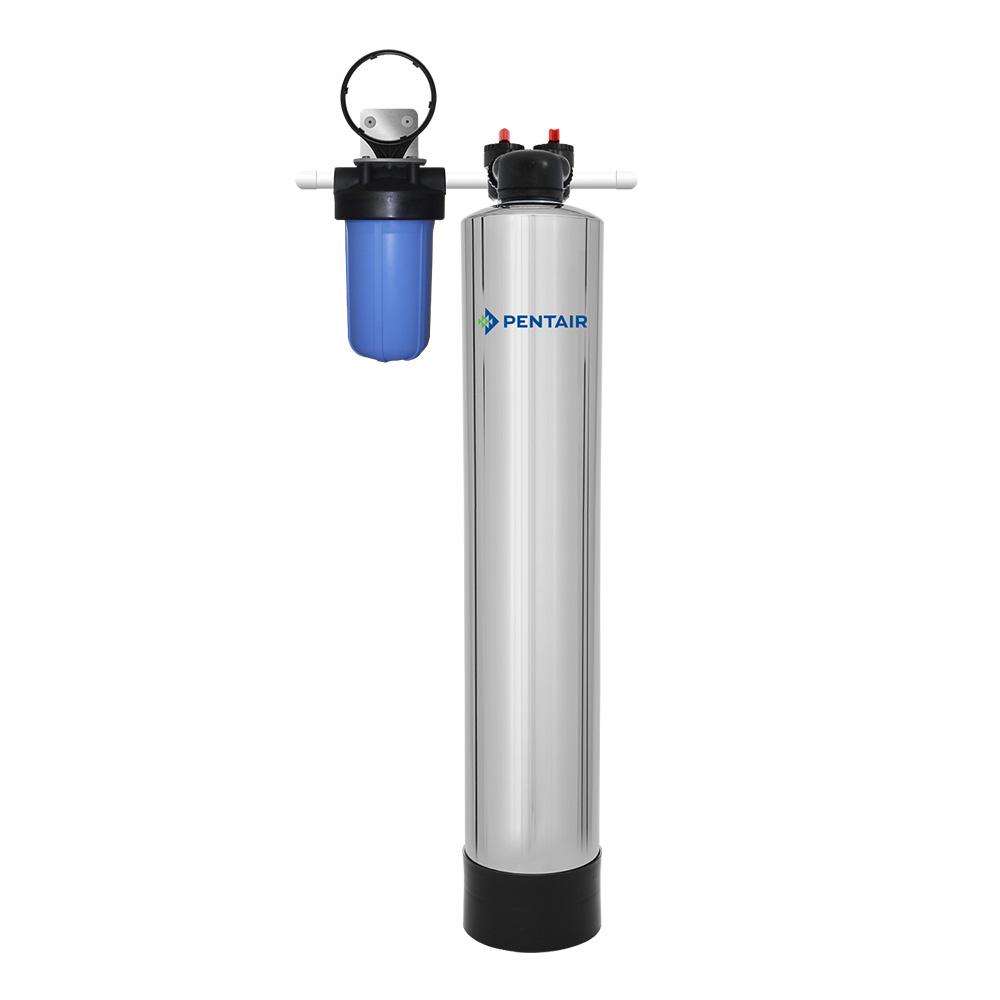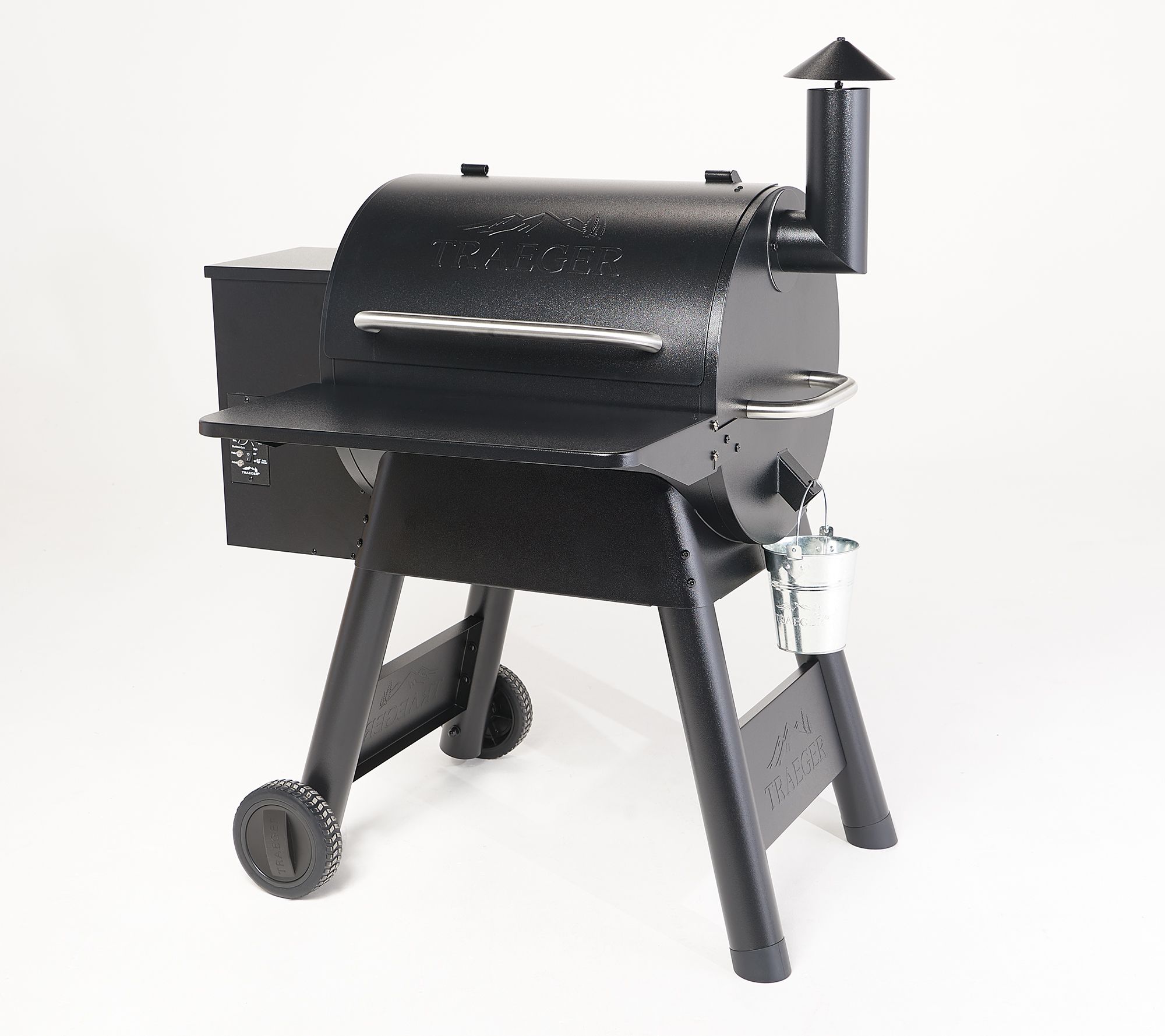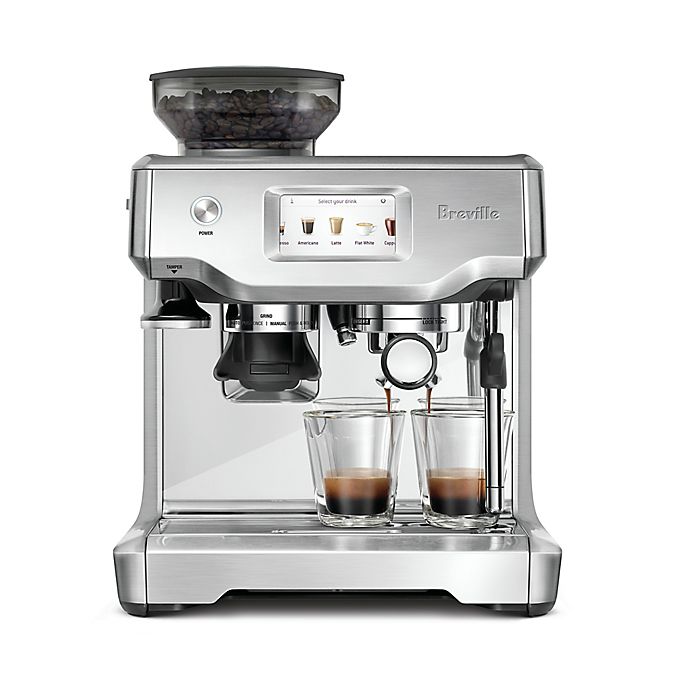Vtopmart Airtight Pantry Storage Canisters for Flour, Sugar, Vtopmart 4 Pcs Large Food Storage Containers, 5.2L / 176oz
-
( 3 Reviews )Rated 4.67 out of 5 based on 3 customer ratings03
Have you ever had your favorite cookies or crisps go stale and soft because you left them in their bag after you opened? Then don’t hesitate to choose these airtight containers, as they will always keep your food dry and fresh. If you know which size you want your food storage containers to be and are looking for a set of containers of the same size, then these 4 pieces containers will be a perfect choice for you. Each of the 4 containers of this set has a high capacity of holding up to 5lb flour or sugar.
-
PENTAIR 10 GPM Whole House NaturSoft Water Softener Alternative System
Rated 5.00 out of 507PENTAIR 10 GPM Whole House NaturSoft Water Softener Alternative System
Rated 5.00 out of 507 -
Traeger Ridgeland 572 sq.in Wood Fired Grill & Smoker – K50953
Rated 4.60 out of 505Traeger Ridgeland 572 sq.in Wood Fired Grill & Smoker – K50953
Rated 4.60 out of 505 -
Rocket Espresso Mozzafiato Timer Type V Espresso Machine – ESE353I0700
Rated 5.00 out of 509Rocket Espresso Mozzafiato Timer Type V Espresso Machine – ESE353I0700
Rated 5.00 out of 509 -
Breville® Barista Touch Espresso Maker
Rated 4.60 out of 505Breville® Barista Touch Espresso Maker
Rated 4.60 out of 505
Have you ever had your favorite cookies or crisps go stale and soft because you left them in their bag after you opened? Then don’t hesitate to choose these airtight containers, as they will always keep your food dry and fresh. If you know which size you want your food storage containers to be and are looking for a set of containers of the same size, then these 4 pieces containers will be a perfect choice for you. Each of the 4 containers of this set has a high capacity of holding up to 5lb flour or sugar.
Package Include:
4 Large Storage Containers (175oz / 5.2liters)
4 Measuring Cups
24 Chalkboard Labels
1 Marker
Washing Instructions:
Dishwasher safe for the container, handwash the lid
- Stackable Design —- With the stackable design, these plastic storage containers will make more efficient use of every inch of your home kitchen. Whether you have a large or small pantry, these durable containers will help you organize your kitchen and pantry better. Easy to clean and dishwasher safe, please hand wash the lid.
- Seal Securely —- Vtopmart airtight food storage containers come with Side-locking lids that ensure maximum freshness and prolonged food storage by sealing tightly. They will protect your food from air and water, so you don’t need to worry about your favorite foods turning stale anymore! Please ensure that the lid is lined up properly in order to close them.
- Made from High-Grade Plastic —- These pantry storage containers are made from high-grade BPA free plastic, which has decent quality. Containers are fairly sturdy and nice looking, which are worth every cent you paid for them. The clear plastic let you see what is in the container, you can get what you want easily without opening every container.
- Make a Huge Difference in Pantry Organization —- If you already got tired of messy flour and sugar bags, then don’t hesitate to choose our large food storage containers. These flour containers will make everything looks neat and in order. Come with 4 premium food storage canisters, 4 measuring cups, 24 chalkboard Labels, this container set will also be an ideal gift for any family.
- Perfect for Storing Dry Food —- The size of each container is 7.5 x 7.5 x 9.1 inch ( 5.2L / 176 oz) , with the large capacity, these kitchen storage containers are perfect for many kinds of dry food and baking supplies, such as flour, sugar, rice, grain, chips, cereals, nuts, beans, snacks, pasta, coffee and tea. Plus wide enough openings to reach in with measuring cup.
Additional information
| Features | Dry Food Storage, for Kitchen Pantry Organization |
|---|---|
| Assembled Product Dimensions (L x W x H) | 7.50 x 7.50 x 8.91 Inches |
2L or 2-L may refer to:
- Helvetic Airways IATA code
- Second Life
- Second year law school student in the United States
- 2-liter bottle
4 (four) is a number, numeral and digit. It is the natural number following 3 and preceding 5. It is a square number, the smallest semiprime and composite number, and is considered unlucky in many East Asian cultures.
5 (five) is a number, numeral and digit. It is the natural number, and cardinal number, following 4 and preceding 6, and is a prime number.
Humans, and many other animals, have 5 digits on their limbs.
Flour is a powder made by grinding raw grains, roots, beans, nuts, or seeds. Flours are used to make many different foods. Cereal flour, particularly wheat flour, is the main ingredient of bread, which is a staple food for many cultures. Corn flour has been important in Mesoamerican cuisine since ancient times and remains a staple in the Americas. Rye flour is a constituent of bread in both Central Europe and Northern Europe.
Cereal flour consists either of the endosperm, germ, and bran together (whole-grain flour) or of the endosperm alone (refined flour). Meal is either differentiable from flour as having slightly coarser particle size (degree of comminution) or is synonymous with flour; the word is used both ways.
The CDC has cautioned not to eat raw flour doughs or batters. Raw flour can contain harmful bacteria such as E. coli and needs to be cooked like other foods.
Normal processing of flour from which the outer layers have been removed (white flour) removes nutrients. Such flours, and breads made from them, may be fortified by adding nutrients; this is required by law in the UK.
Food is any substance consumed by an organism for nutritional support. Food is usually of plant, animal, or fungal origin and contains essential nutrients such as carbohydrates, fats, proteins, vitamins, or minerals. The substance is ingested by an organism and assimilated by the organism's cells to provide energy, maintain life, or stimulate growth. Different species of animals have different feeding behaviours that satisfy the needs of their metabolisms and have evolved to fill a specific ecological niche within specific geographical contexts.
Omnivorous humans are highly adaptable and have adapted to obtaining food in many different ecosystems. Humans generally use cooking to prepare food for consumption. The majority of the food energy required is supplied by the industrial food industry, which produces food through intensive agriculture and distributes it through complex food processing and food distribution systems. This system of conventional agriculture relies heavily on fossil fuels, which means that the food and agricultural systems are one of the major contributors to climate change, accounting for as much as 37% of total greenhouse gas emissions.
The food system has a significant impact on a wide range of other social and political issues, including sustainability, biological diversity, economics, population growth, water supply, and food security. Food safety and security are monitored by international agencies, like the International Association for Food Protection, the World Resources Institute, the World Food Programme, the Food and Agriculture Organization, and the International Food Information Council.
A pantry is a room or cupboard where beverages, food, (sometimes) dishes, household cleaning products, linens or provisions are stored within a home or office. Food and beverage pantries serve in an ancillary capacity to the kitchen.
Sugar is the generic name for sweet-tasting, soluble carbohydrates, many of which are used in food. Simple sugars, also called monosaccharides, include glucose, fructose, and galactose. Compound sugars, also called disaccharides or double sugars, are molecules made of two bonded monosaccharides; common examples are sucrose (glucose + fructose), lactose (glucose + galactose), and maltose (two molecules of glucose). White sugar is a refined form of sucrose. In the body, compound sugars are hydrolysed into simple sugars.
Longer chains of monosaccharides (>2) are not regarded as sugars and are called oligosaccharides or polysaccharides. Starch is a glucose polymer found in plants, the most abundant source of energy in human food. Some other chemical substances, such as ethylene glycol, glycerol and sugar alcohols, may have a sweet taste but are not classified as sugar.
Sugars are found in the tissues of most plants. Honey and fruits are abundant natural sources of simple sugars. Sucrose is especially concentrated in sugarcane and sugar beet, making them ideal for efficient commercial extraction to make refined sugar. In 2016, the combined world production of those two crops was about two billion tonnes. Maltose may be produced by malting grain. Lactose is the only sugar that cannot be extracted from plants. It can only be found in milk, including human breast milk, and in some dairy products. A cheap source of sugar is corn syrup, industrially produced by converting corn starch into sugars, such as maltose, fructose and glucose.
Sucrose is used in prepared foods (e.g., cookies and cakes), is sometimes added to commercially available ultra-processed food and beverages, and is sometimes used as a sweetener for foods (e.g., toast and cereal) and beverages (e.g., coffee and tea). The average person consumes about 24 kilograms (53 pounds) of sugar each year. North and South Americans consume up to 50 kg (110 lb), and Africans consume under 20 kg (44 lb).
As free sugar consumption grew in the latter part of the 20th century, researchers began to examine whether a diet high in free sugar, especially refined sugar, was damaging to human health. In 2015, the World Health Organization strongly recommended that adults and children reduce their intake of free sugars to less than 10% of their total energy intake and encouraged a reduction to below 5%. In general, high sugar consumption damages human health more than it provides nutritional benefit and is associated with a risk of cardiometabolic and other health detriments.






by Bette
these storage containers are awesome. Just what I was looking for. Great price too!
by Diane
lids are a little flimsy but over all I am happy with them.
by Steve
work great, as described. Very happy with them!